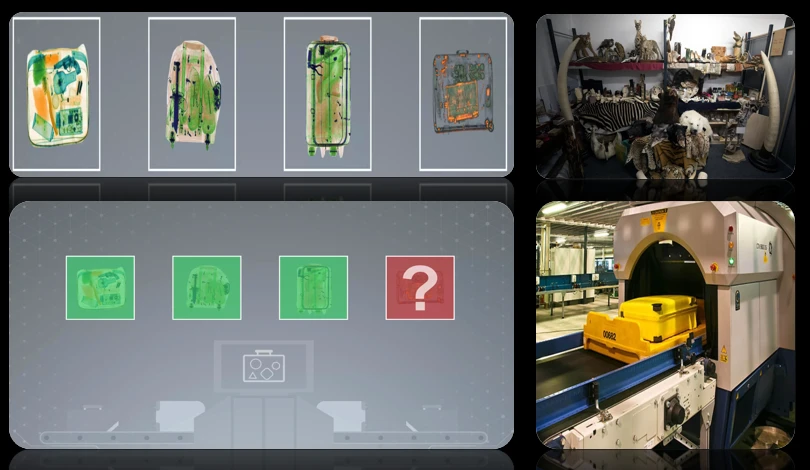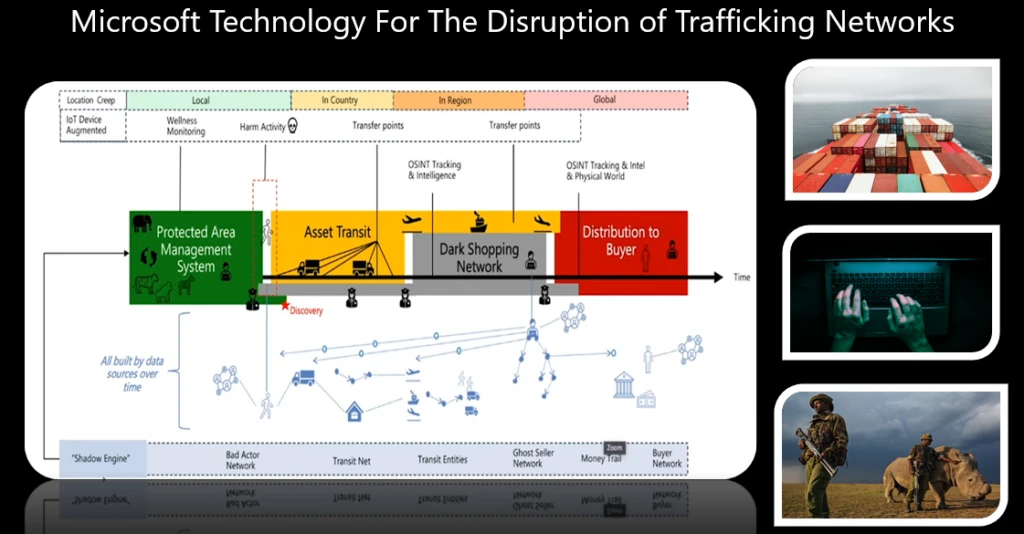
Project SEEKER: Using artificial intelligence for good
Project SEEKER is pioneering multi-species artificial intelligence (AI) models built using Microsoft Azure Machine Learning Services. It can automatically detect illegally trafficked wildlife concealed within luggage and cargo.
Illegal wildlife trafficking is worth $23 billion per year1. That makes it the fourth-largest illegal trade in the world, following only drugs, guns, and human trafficking2. One of the biggest challenges in protecting endangered wildlife species is that it is a massively unregulated industry. Often this trade goes hand in hand with other organized crimes, including corruption and money laundering.
While Microsoft is engaged in many significant biodiversity projects, Project SEEKER is a first of its kind initiative aimed at using bespoke Microsoft AI to curb the trade. Currently, there are no integrated, multi-species illegal wildlife algorithms on the market.
The project is a Microsoft AI for Good research project developed by a United Kingdom and United States team focused on disrupting the illegal wildlife trafficking trade.

Following a recent trial at London Heathrow airport, Microsoft’s Project SEEKER proved its ability to detect illegal wildlife items concealed in baggage and cargo—capabilities lacking in current airport screening and security systems.
The SEEKER trial has seen a more than 70 percent success rate detecting ivory products, as well as a range of ground-breaking detection successes for a range of wildlife species. Using the Microsoft Azure Stack Edge, the technology can be integrated into current airport screening infrastructure to detect any species.
SEEKER, when used in conjunction with other Microsoft Technologies like the Project 15 Platform, can build intelligence for global enforcement teams to better see what is being trafficked, where the wildlife comes from, and where it is going.
Project 15 is a conservation and ecosystem sustainability open platform that brings the latest Microsoft cloud and Internet of Things (IoT) technologies to accelerate scientific teams building solutions like species tracking and observation, poaching prevention, ecosystem monitoring, and pollution detection. With a better understanding of criminal tactics and illegal trade patterns, private and public-sector organizations and enforcement agencies can now be able to take informed action against the networks behind the trade.

Project SEEKER technology can be use alongside existing airport screening and security infrastructure. Its AI can scan 3D computed tomography (CT) X-ray baggage images to automatically detect a variety of animal species using specially developed artificial intelligence. This AI can both interpret the characteristics of the object as well as determine the atomic density of items within screened bags.
The technology has been trained on real items seized by United Kingdom border officers, as well as data created using a novel approach to detect threats. The bags containing illegally trafficked wildlife species are compared against thousands of “clear” passenger bags used in model training to ensure precision and recall, resulting in a low rate of false alarms.
Because SEEKER is used as part of the normal security process, it could be used for other trafficked items that contribute to the profits of organized criminals. These could include prohibited items for travel or contraband, such as prohibited foodstuffs.
Because Project SEEKER is built on Microsoft’s global Azure cloud platform, that data can be analysed to build a comprehensive and detailed picture of illegal wildlife trafficking across the world. It has been developed in collaboration with the United Kingdom Border Force’s Convention on International Trade in Endangered Species (CITES) team, London Heathrow Airport and its leading screening partner, as well as the Duke of Cambridge’s Royal Foundation.
Recently the Duke of Cambridge visited Microsoft’s United Kingdom headquarters to hear about the potential of this technology as part of his work with The Royal Foundation’s United for Wildlife program. He is a keen supporter of the development and deployment of this innovative technology.
Team members are now working to build up an initial group of early adopters. This will be critical improving SEEKER’s capabilities in the fight against the illegal wildlife trade.
Learn about how we can help reignite the economy and drive financial accountability.
Sources:
1Wildlife crime: a $23 billion trade that’s destroying our planet—World Economic Forum.
2Is the illegal trade in wildlife the fourth largest in the world?—Full Fact.




